- Understanding Ambrosia Allergy
- Symptoms of Ambrosia Allergy
- Causes of Ambrosia Allergy
- Managing Ambrosia Allergy
- Conclusion
- Recognizing Symptoms of Ambrosia Allergy
- Common Symptoms
- Less Common Symptoms
- When to Seek Medical Attention
- Conclusion
- Preventing Ambrosia Allergy
- Avoid Outdoor Activities During High Pollen Count
- Keep Windows and Doors Closed
- Use Air Purifiers and Filters
- Wear Protective Clothing
- Shower and Change Clothes After Outdoor Activities
- Monitor Pollen Levels
- Consult with a Healthcare Professional
- Managing Ambrosia Allergy at Home
- 1. Minimize exposure
- 2. Maintain a clean indoor environment
- 3. Manage symptoms
- 4. Consult a medical professional
- Avoiding Ambrosia Allergy Triggers
- 1. Identify Ambrosia Plants
- 2. Stay Updated on Pollen Count
- 3. Limit Outdoor Activities
- 4. Close Windows and Use Air Purifiers
- 5. Practice Good Hygiene
- 6. Avoid Drying Clothes Outside
- 7. Keep Pets Clean
- 8. Consider Allergy Medications
- Treating Ambrosia Allergy
- 1. Avoidance
- 2. Medications
- 3. Immunotherapy
- 4. Allergen Avoidance Measures
- 5. Consultation with an Allergist
- Controlling Ambrosia Allergy in Outdoor Spaces
- 1. Identify and Remove Ambrosia Plants
- 2. Use Barrier Methods
- 3. Practice Regular Maintenance
- 4. Avoid Outdoor Activities during High Pollen Days
- 5. Wear Protective Clothing
- 6. Use Allergy Medications
- 7. Consult a Professional
- Seeking Professional Help for Ambrosia Allergy
- Why seek professional help?
- How to find a professional?
- Conclusion
- Questions and Answers:
- What is ambrosia allergy?
- What are the symptoms of ambrosia allergy?
- How can I manage ambrosia allergy symptoms?
- Are there any natural remedies for ambrosia allergy?
- Can ambrosia allergy be cured?
- What are some common triggers of ambrosia allergy?
- Videos: Tips how I care for bare rooted fruit trees when they arrived? and Washington Navel Orange trees.
Ambrosia, commonly known as ragweed, is a highly allergenic plant that affects millions of people worldwide. This hardy weed produces large quantities of pollen, which is released into the air during late summer and early autumn. The pollen of the Ambrosia plant is a potent allergen and can cause severe allergic reactions in susceptible individuals.
Allergy symptoms caused by Ambrosia pollen include sneezing, nasal congestion, itchy and watery eyes, and asthma exacerbations. For those who suffer from Ambrosia allergy, it is important to adopt effective strategies to manage their symptoms and reduce exposure to this allergenic plant.
One of the most effective strategies for managing Ambrosia allergy is to minimize outdoor exposure during the peak pollen season. This can be achieved by staying indoors when pollen levels are high, especially during windy days. Keeping windows closed and using air purifiers with HEPA filters can further reduce the amount of pollen indoors.
Furthermore, proper personal hygiene can also help in managing Ambrosia allergy. Regularly washing hands and face after being outdoors can remove any pollen particles that may have been picked up. Wearing a hat and sunglasses can also help to reduce pollen contact with the face and eyes.
Understanding Ambrosia Allergy
Ambrosia, also known as ragweed, is a highly allergenic plant that affects millions of people around the world. The allergy caused by ambrosia pollen can be extremely uncomfortable and can significantly impact the quality of life for those who suffer from it. In this article, we will discuss the symptoms, causes, and management strategies for ambrosia allergy.
Symptoms of Ambrosia Allergy
Ambrosia allergy typically manifests itself through a range of symptoms that can vary in severity from person to person. Common symptoms include:
- Sneezing
- Runny or stuffy nose
- Itchy and watery eyes
- Headache
- Fatigue
- Coughing
In some cases, ambrosia allergy can also trigger asthma attacks or exacerbate existing asthma symptoms.
Causes of Ambrosia Allergy
The main cause of ambrosia allergy is the pollen released by the ambrosia plants. The pollen is carried by the wind and can travel long distances, making it difficult to avoid exposure. Ambrosia plants are most prevalent during the late summer and early fall, which is why this is the peak season for ambrosia allergy symptoms.
Managing Ambrosia Allergy
While complete avoidance of ambrosia pollen is challenging, there are several strategies that can be effective in managing the symptoms of ambrosia allergy:
- Avoid going outside during peak pollen times, typically early morning and late afternoon.
- Keep windows and doors closed to prevent pollen from entering your home.
- Use air purifiers with HEPA filters to minimize pollen indoors.
- Wear a mask when doing outdoor activities that may expose you to ambrosia pollen.
- Take antihistamines to alleviate allergic symptoms.
- Consider allergy shots or immunotherapy to build tolerance to ambrosia pollen.
Conclusion
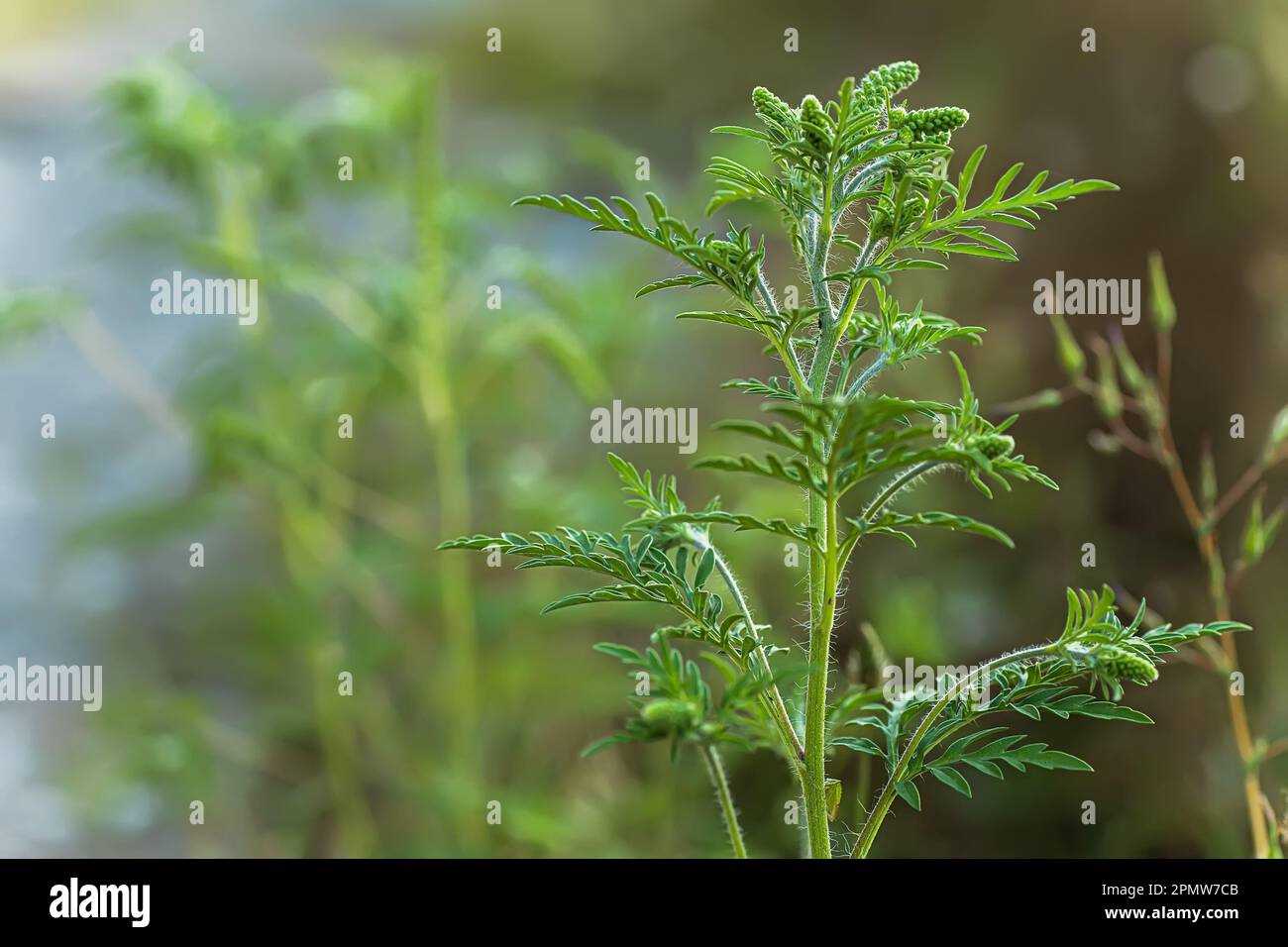
Ambrosia allergy can be a challenging condition to manage, but with the right strategies and precautions, it is possible to minimize the impact of the allergy on your daily life. By understanding the symptoms, causes, and management strategies for ambrosia allergy, you can take control of your allergies and live a more comfortable and symptom-free life.
Recognizing Symptoms of Ambrosia Allergy
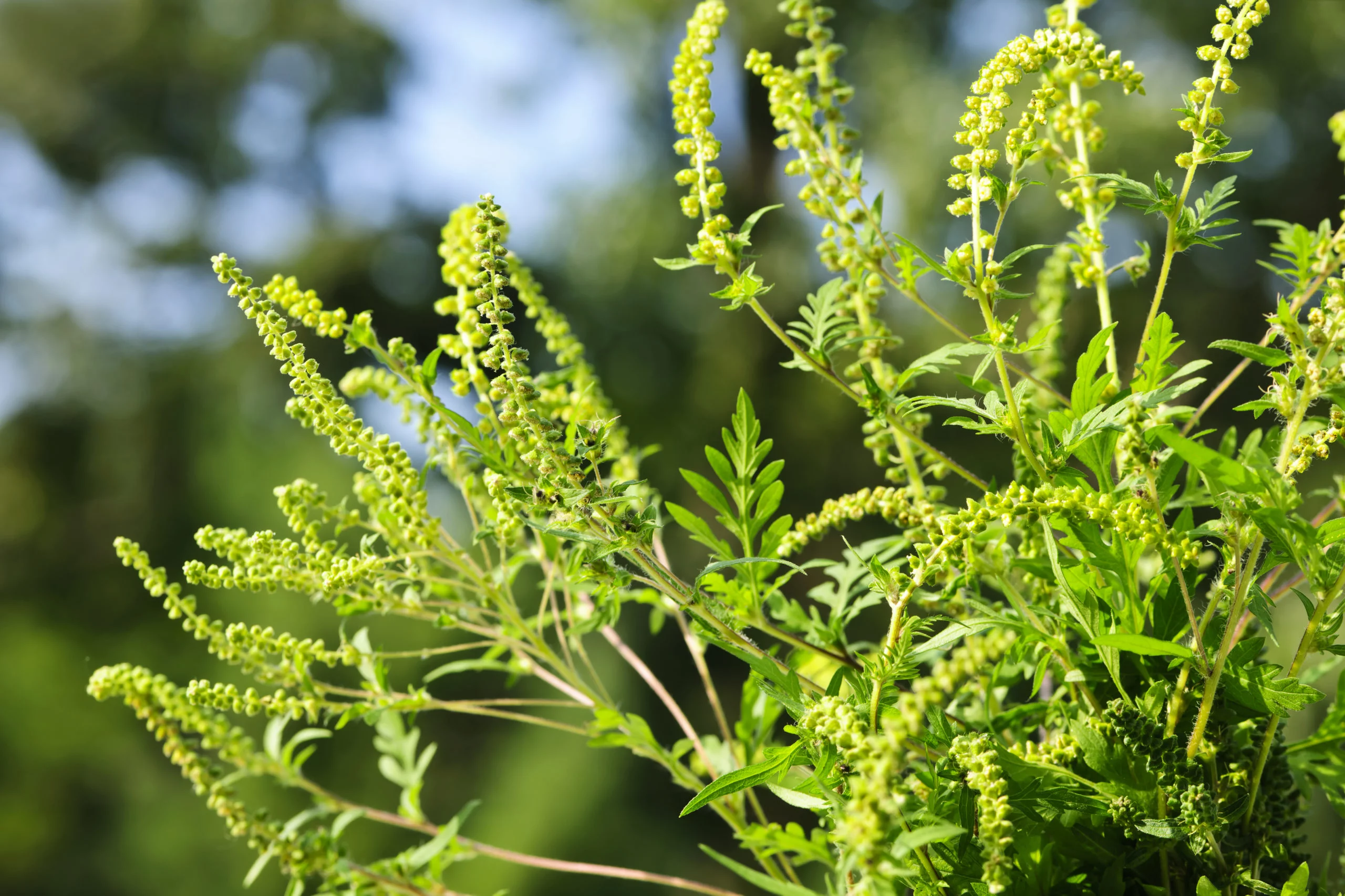
Ambrosia allergy, also known as ragweed allergy, is a common seasonal allergy caused by the pollen of the Ambrosia plant. It affects millions of people worldwide and can cause a range of symptoms that can significantly impact one’s quality of life.
Common Symptoms
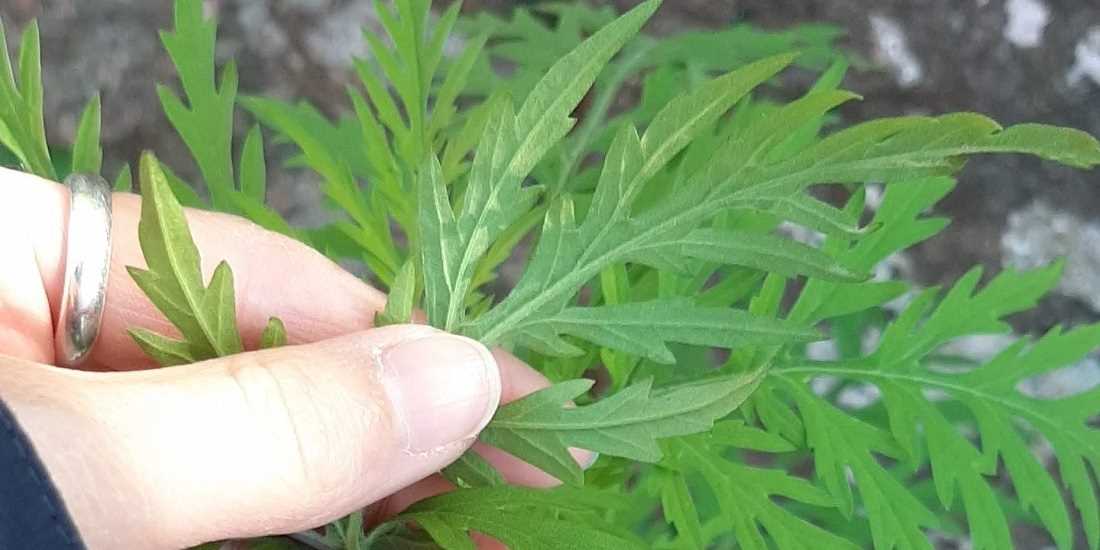
- Sneezing: Sneezing is often one of the first signs of ambrosia allergy. It may occur frequently and uncontrollably.
- Runny or stuffy nose: The pollen can cause the nasal passages to become inflamed, resulting in a runny or stuffy nose.
- Itchy, watery eyes: Ambrosia pollen can irritate the eyes, leading to itching, redness, and excessive tearing.
- Congestion: The inflammation caused by the allergen can lead to nasal congestion, making breathing difficult.
- Sore throat: Some individuals may experience a scratchy or sore throat as a result of post-nasal drip caused by ambrosia allergy.
- Coughing: Allergies can trigger a persistent cough, especially if there is post-nasal drip.
- Fatigue: Ambrosia allergy can cause fatigue and make individuals feel generally unwell.
Less Common Symptoms
In addition to the common symptoms mentioned above, ambrosia allergy can also cause less common symptoms, including:
- Headaches: Some individuals may experience headaches as a result of allergic reactions to ambrosia pollen.
- Difficulty concentrating: Allergies can affect cognitive function and make it challenging to concentrate or focus.
- Ear and throat irritation: The pollen can cause irritation in the ears and throat, leading to discomfort or a sensation of fullness in these areas.
- Worsening of asthma: People with asthma may experience an exacerbation of their symptoms and increased difficulty breathing during the ragweed season.
When to Seek Medical Attention
If you suspect you have ambrosia allergy and experience severe symptoms or symptoms that interfere with your daily life, it is essential to seek medical attention. A healthcare professional can provide a proper diagnosis and recommend appropriate treatment options to manage your ambrosia allergy effectively.
Conclusion
Recognizing the symptoms of ambrosia allergy is crucial in understanding whether you are affected by this allergenic plant. By identifying and seeking appropriate medical assistance, you can develop effective strategies for managing and mitigating the impact of ambrosia allergy on your life.
Preventing Ambrosia Allergy
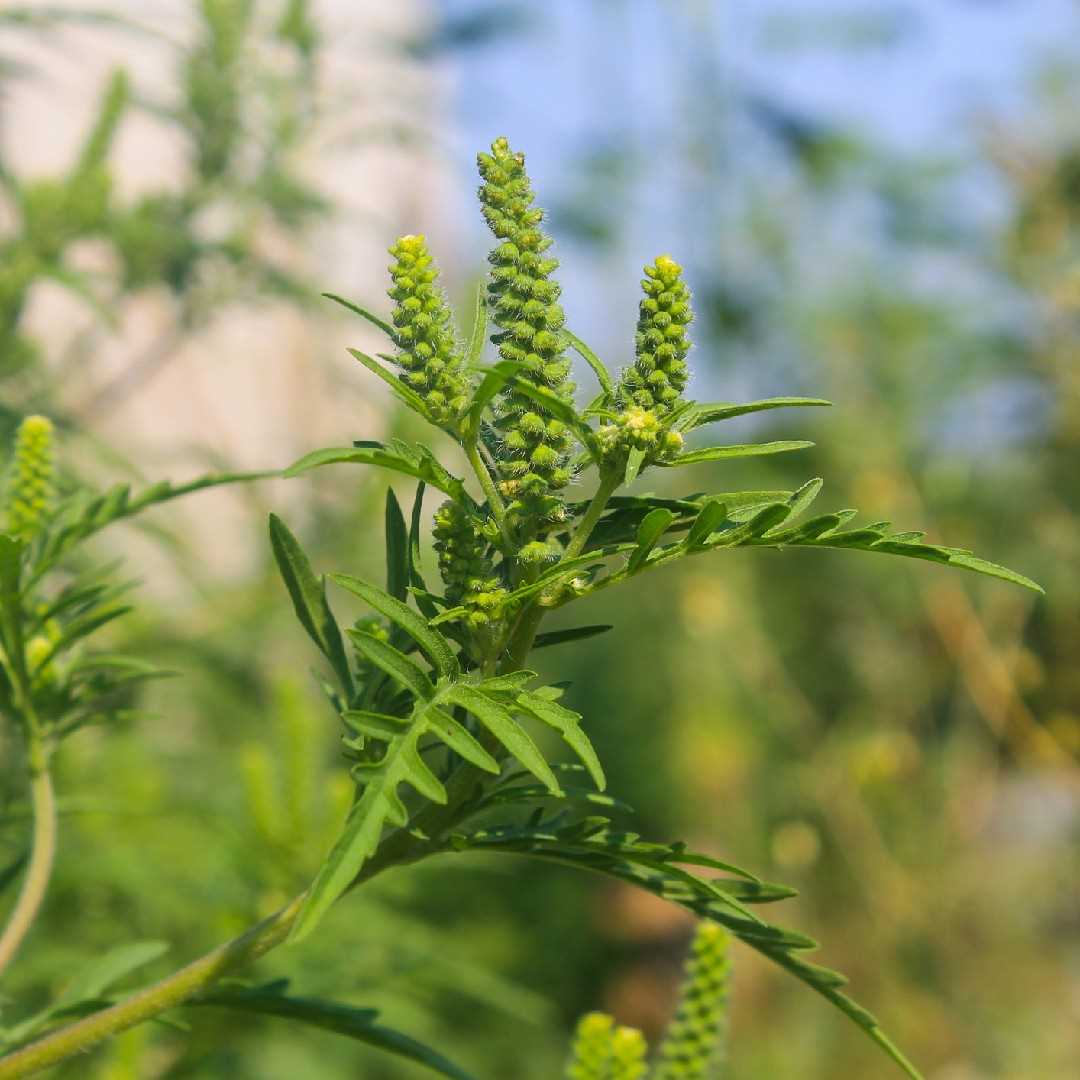
Ambrosia allergy can be a challenging condition to manage, but there are some effective strategies that can help minimize symptoms and prevent allergic reactions. By taking proactive measures to avoid exposure to ambrosia pollen and taking appropriate precautions, individuals with ambrosia allergy can lead a more comfortable life.
Avoid Outdoor Activities During High Pollen Count
- Stay indoors during peak pollen hours, typically between 5 a.m. and 10 a.m.
- Avoid outdoor activities such as gardening or mowing the lawn when the pollen count is high.
Keep Windows and Doors Closed
- Keep windows and doors closed during pollen season to prevent pollen from entering your home.
- Use air conditioning instead of opening windows to keep your home cool.
Use Air Purifiers and Filters
- Use high-efficiency particulate air (HEPA) filters in your home to trap pollen and other allergens.
- Consider using air purifiers with HEPA filters in your bedroom and other commonly used areas to further reduce exposure to allergens.
Wear Protective Clothing
- Wear long-sleeved shirts, pants, and a wide-brimmed hat when spending time outdoors.
- Wearing sunglasses can help protect your eyes from airborne pollen.
Shower and Change Clothes After Outdoor Activities
- After spending time outdoors, take a shower to remove any pollen from your body and hair.
- Change into clean clothes to prevent pollen from spreading throughout your home.
Monitor Pollen Levels
- Stay informed about local pollen forecasts and plan your activities accordingly.
- Use pollen tracking apps or websites to stay updated on current pollen levels in your area.
Consult with a Healthcare Professional
- If your symptoms are severe or not well-controlled with over-the-counter medications, consult with an allergist or immunologist for further evaluation and treatment options.
- They may recommend allergy shots or prescribe medication to help manage your ambrosia allergy symptoms.
By following these preventive measures and seeking appropriate medical care, individuals with ambrosia allergy can take control of their allergies and improve their quality of life.
Managing Ambrosia Allergy at Home
1. Minimize exposure
To manage ambrosia allergy at home, it is crucial to minimize exposure to the allergenic plant. Follow these strategies:
- Avoid visiting areas with a high concentration of ambrosia plants, such as fields, meadows, and gardens where it commonly grows.
- Keep windows closed during peak pollen season to prevent allergens from entering your home.
- Use air purifiers with HEPA filters to remove pollen particles from indoor air.
- Plan outdoor activities for times when the pollen count is lower, such as after rain or in the evening.
- Wear a hat and sunglasses to protect your face from coming into contact with pollen.
- Wash your hands and face thoroughly after spending time outdoors to remove any pollen particles.
2. Maintain a clean indoor environment
Ambrosia pollen can easily enter your home and cause allergy symptoms. Follow these tips to maintain a clean indoor environment:
- Vacuum your home regularly using a vacuum cleaner equipped with a HEPA filter to trap pollen particles.
- Remove shoes and outerwear when entering your home to prevent tracking in pollen.
- Wash bedding, curtains, and other fabrics regularly in hot water to remove any pollen that may have settled on them.
- Dust surfaces frequently with a damp cloth to prevent pollen from accumulating.
- Avoid drying clothes outdoors during peak pollen season, as they can easily collect pollen particles.
3. Manage symptoms
If you experience ambrosia allergy symptoms at home, there are several strategies you can use to manage them:
- Take over-the-counter antihistamines to relieve sneezing, itching, and runny nose.
- Use nasal saline rinses to flush out allergens from your nasal passages.
- Keep windows closed and use air conditioning to filter out pollen and keep your home cool.
- Consider using nasal corticosteroid sprays to reduce inflammation in the nasal passages.
- Discuss with your doctor the possibility of allergy shots or immunotherapy to help desensitize your immune system to ambrosia pollen.
4. Consult a medical professional
If your ambrosia allergy symptoms persist or worsen despite your efforts to manage them at home, it is important to consult a medical professional. They can provide a proper diagnosis, prescribe effective medications, and offer personalized advice on managing your allergy.
Avoiding Ambrosia Allergy Triggers
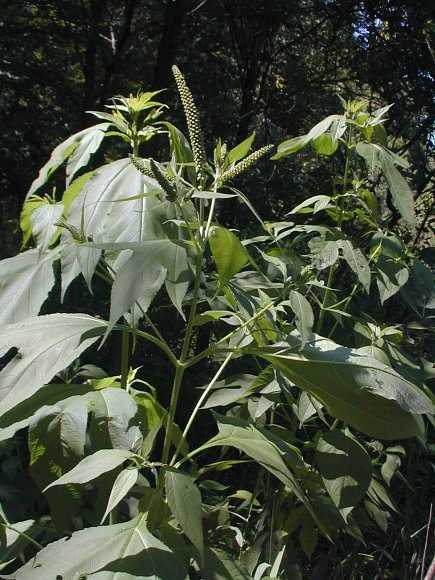
Ambrosia allergy can cause discomfort and allergy symptoms in individuals who are sensitive to this allergenic plant. To minimize exposure and manage your allergies effectively, it is essential to avoid triggers that can worsen your symptoms. Here are some strategies to help you avoid Ambrosia allergy triggers:
1. Identify Ambrosia Plants
Learn how to identify Ambrosia plants, such as Ambrosia artemisiifolia (common ragweed) and Ambrosia trifida (giant ragweed). These plants have distinctive features like feather-like leaves and clusters of small greenish flowers. By knowing what these plants look like, you can easily spot and avoid them.
2. Stay Updated on Pollen Count
Monitor the local pollen count to identify days when Ambrosia pollen is high. You can check pollen count reports from local weather services or use pollen count apps. On days with high pollen counts, limit your outdoor activities to reduce exposure.
3. Limit Outdoor Activities
If you are allergic to Ambrosia, it is advisable to limit your outdoor activities, especially during the peak pollen season. Stay indoors when pollen counts are high, particularly in the mornings and evenings.
4. Close Windows and Use Air Purifiers
To prevent pollen from entering your home, keep windows closed during the peak pollen season. Consider using air purifiers with HEPA filters to trap airborne pollen particles and improve indoor air quality.
5. Practice Good Hygiene
After spending time outdoors, wash your clothes and take a shower to remove any pollen that may have stuck to your skin and hair. This will help reduce the allergen load in your living space and mitigate allergy symptoms.
6. Avoid Drying Clothes Outside
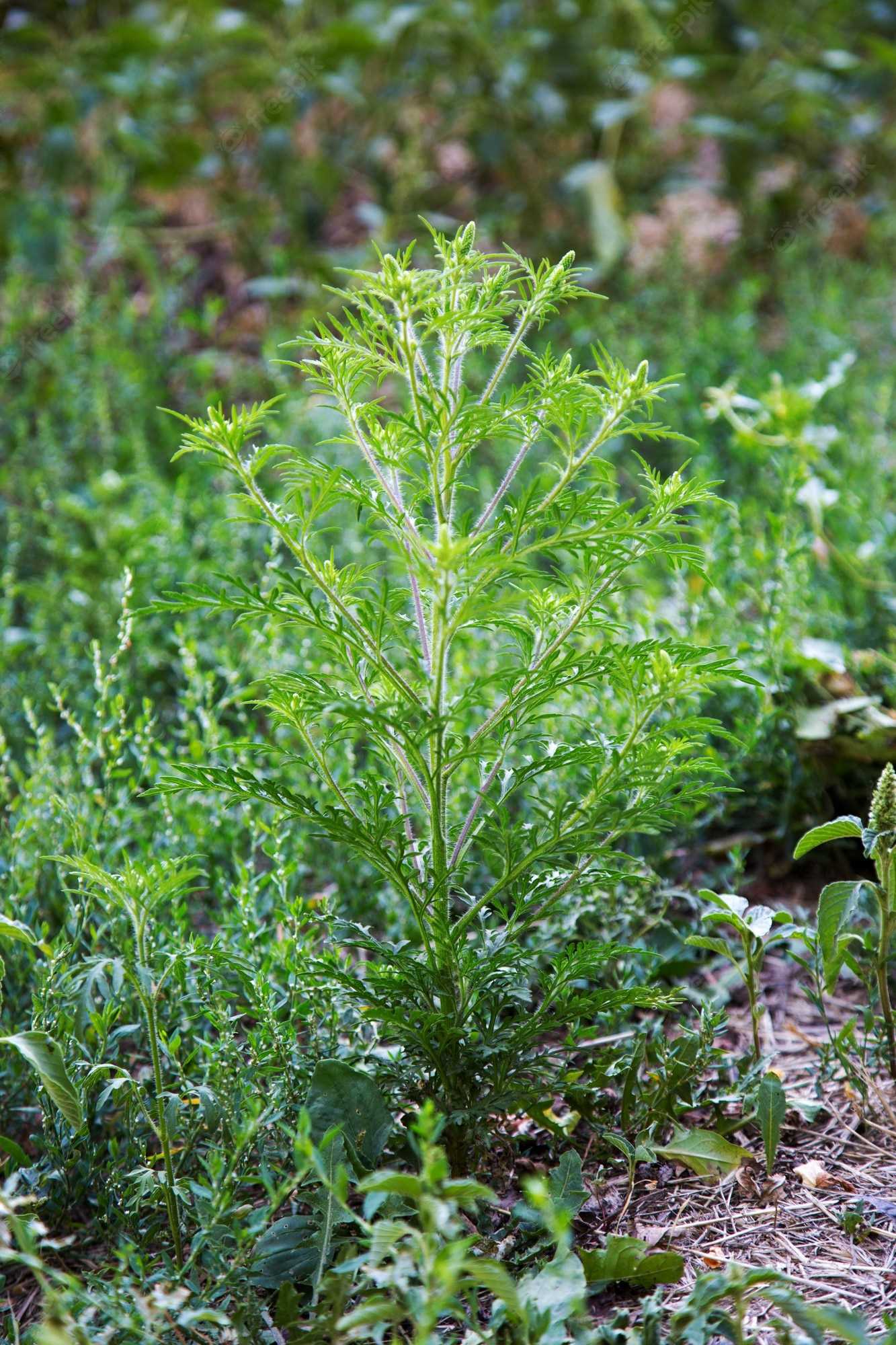
Avoid drying your clothes or bedding outside during the peak Ambrosia pollen season. Pollen can easily cling to fabrics and trigger allergy symptoms when you use them.
7. Keep Pets Clean
Pets can bring pollen indoors on their fur, so it’s important to keep them clean by grooming and brushing them regularly. Consider wiping them down with a damp cloth after they have been outside to minimize pollen transfer.
8. Consider Allergy Medications
If avoiding triggers is not sufficient to manage your Ambrosia allergy symptoms, consult an allergist or healthcare professional for appropriate allergy medications. Antihistamines, nasal sprays, and other medications can provide relief from symptoms and help you control your allergies.
By following these strategies and implementing lifestyle changes, you can effectively manage your Ambrosia allergy and reduce the impact it has on your daily life.
Treating Ambrosia Allergy
Ambrosia allergy, commonly known as ragweed allergy, can cause uncomfortable symptoms for those affected. Luckily, there are several strategies for managing and treating this allergenic plant.
1. Avoidance
The first step in treating Ambrosia allergy is to minimize exposure to the plant. This can be done by:
- Avoiding outdoor activities during peak pollen seasons, typically late summer and fall.
- Closing windows and using air conditioning to filter out pollen.
- Wearing a pollen mask when doing yard work or gardening.
2. Medications
Medications can help to alleviate the symptoms of Ambrosia allergy. Some options include:
- Antihistamines: These can be taken orally or used as nasal sprays to reduce sneezing, itching, and runny nose.
- Nasal corticosteroids: These nasal sprays provide long-term relief by reducing inflammation in the nasal passages.
- Decongestants: These can help to relieve nasal congestion, but should be used with caution and for short durations to avoid rebound congestion.
- Leukotriene modifiers: These medications can help to control inflammation and reduce symptoms.
3. Immunotherapy
In some cases, immunotherapy may be recommended for Ambrosia allergy. This involves regular injections of small amounts of Ambrosia allergen to desensitize the immune system over time. Immunotherapy can provide long-term relief and reduce the need for medication.
4. Allergen Avoidance Measures
Implementing allergen avoidance measures at home can also help to manage Ambrosia allergy. Consider the following:
- Removing Ambrosia plants from your own yard and surrounding areas.
- Using high-efficiency particulate air (HEPA) filters in your home to remove pollen particles from the air.
- Regularly vacuuming and dusting to minimize allergen buildup.
- Washing bedding regularly in hot water to remove pollen.
5. Consultation with an Allergist
If your symptoms are severe or not well-controlled with over-the-counter medications, it may be beneficial to consult with an allergist. They can provide a comprehensive evaluation, recommend appropriate treatments, and help develop an individualized management plan.
By following these strategies, individuals with Ambrosia allergy can effectively manage their symptoms and improve their quality of life.
Controlling Ambrosia Allergy in Outdoor Spaces
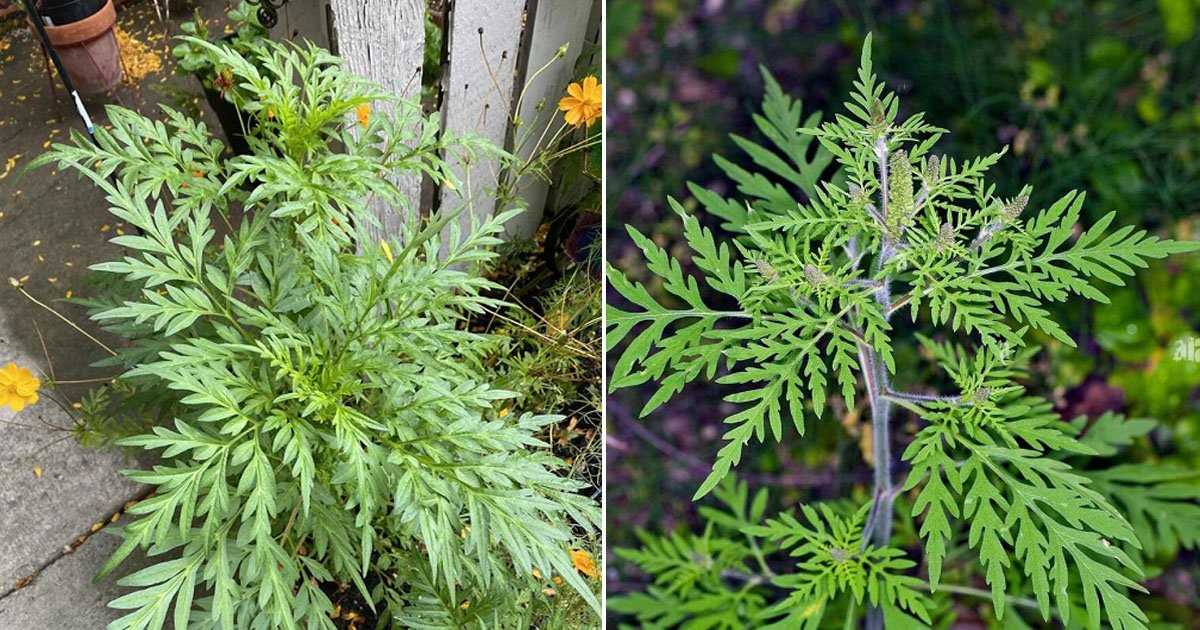
Ambrosia, commonly known as ragweed, is a highly allergenic plant that can cause severe allergic reactions in some individuals. It is important to take steps to control and minimize exposure to ambrosia in outdoor spaces to reduce allergy symptoms and improve overall health.
1. Identify and Remove Ambrosia Plants
The first step in controlling ambrosia allergy is to identify and remove any ambrosia plants in your outdoor spaces. Ambrosia plants have distinctive leaves and flowers, making them relatively easy to identify. It is important to remove the entire plant, including the roots, to prevent regrowth.
2. Use Barrier Methods
Another effective strategy for controlling ambrosia allergy is to use barrier methods to prevent the growth and spread of ambrosia plants. This can be done by using mulch or ground cover plants to suppress weed growth and by installing physical barriers such as fences or weed fabric.
3. Practice Regular Maintenance
To control ambrosia allergy in outdoor spaces, it is important to practice regular maintenance, including mowing, weeding, and trimming. Regularly mowing your lawn will help prevent the growth of ambrosia plants, while regular weeding and trimming will help to remove any ambrosia plants that do manage to grow.
4. Avoid Outdoor Activities during High Pollen Days
During peak ambrosia pollen season, it is advisable to avoid outdoor activities when pollen counts are high. Pollen counts tend to be highest in the early mornings and evenings, so it is best to limit outdoor activities during these times. Additionally, it may be helpful to check local pollen forecasts to plan outdoor activities accordingly.
5. Wear Protective Clothing
When spending time outdoors during ambrosia pollen season, it is important to wear protective clothing to minimize exposure. This includes wearing long sleeves, long pants, hats, and sunglasses to cover exposed skin and protect the eyes from allergens.
6. Use Allergy Medications
If you or someone in your household experiences severe ambrosia allergy symptoms, it may be necessary to use allergy medications to manage the symptoms. This could include over-the-counter antihistamines, nasal corticosteroids, or allergy shots prescribed by a healthcare professional.
7. Consult a Professional
If you are struggling to control ambrosia allergy in your outdoor spaces, it may be helpful to consult a professional, such as a landscaping expert or allergist. They can provide guidance and recommendations specific to your situation and help develop an effective allergy management plan.
| Strategy | Effectiveness | Cost | Complexity |
|---|---|---|---|
| Identify and Remove Ambrosia Plants | Highly effective | Low cost | Low complexity |
| Use Barrier Methods | Effective | Varies | Varies |
| Regular Maintenance | Effective | Low cost | Low complexity |
| Avoid Outdoor Activities during High Pollen Days | Effective | No cost | Low complexity |
| Wear Protective Clothing | Effective | Low cost | Low complexity |
| Use Allergy Medications | Effective | Varies | Varies |
| Consult a Professional | Highly effective | Varies | Varies |
By implementing these strategies, you can effectively control ambrosia allergy in outdoor spaces and minimize exposure to ambrosia pollen. This will help reduce allergy symptoms and improve overall quality of life during ambrosia pollen season.
Seeking Professional Help for Ambrosia Allergy
If you are struggling with an Ambrosia allergy and finding it difficult to manage the symptoms on your own, seeking professional help is a recommended course of action. Allergists and immunologists are trained specialists who can provide valuable guidance and assistance in managing your Ambrosia allergy.
Why seek professional help?

While there are various over-the-counter medications and home remedies available for managing Ambrosia allergy symptoms, consulting a professional can significantly improve your overall treatment plan. Here are a few reasons why seeking professional help is beneficial:
- Accurate diagnosis: Allergists can perform tests to accurately identify if your symptoms are indeed caused by an Ambrosia allergy or if there are other underlying factors contributing to your symptoms.
- Personalized treatment plan: A professional can assess the severity of your allergy and create a personalized treatment plan tailored to your specific needs. This can include a combination of medications, immunotherapy, and lifestyle changes.
- Access to advanced treatments: Allergists stay updated on the latest advancements in allergy treatments. They can provide you with access to more advanced options, such as sublingual immunotherapy or biologic medications, which may not be available over-the-counter.
- Monitoring and follow-up: Professionals can help monitor your progress and adjust your treatment plan accordingly. They can track changes in your symptoms and provide ongoing support, ensuring you are effectively managing your Ambrosia allergy.
How to find a professional?
When looking for a professional to help you with your Ambrosia allergy, consider the following steps:
- Ask for referrals: Consult your general physician or primary care doctor for recommendations. They may be able to refer you to a trusted allergist or immunologist.
- Research and read reviews: Look for allergists or immunologists in your area and read reviews from their previous patients. Consider their experience, credentials, and patient satisfaction.
- Arrange a consultation: Schedule a consultation with the professional you are interested in. During the consultation, discuss your symptoms, concerns, and treatment goals. This will help you gauge their expertise and compatibility.
- Consider insurance coverage: Check with your insurance provider to see if the professional you choose is covered under your insurance plan. This can help minimize out-of-pocket expenses.
Conclusion
Seeking professional help for your Ambrosia allergy can greatly improve your quality of life and help you effectively manage your symptoms. Allergists and immunologists are specialized in diagnosing and treating allergies and can provide personalized solutions based on your needs. Take the necessary steps to find a professional who can guide you towards better management of your Ambrosia allergy.
Questions and Answers:
What is ambrosia allergy?
Ambrosia allergy is an allergic reaction to the pollen of the ambrosia plant, also known as ragweed. It is a common allergy that affects many people in the United States.
What are the symptoms of ambrosia allergy?
The symptoms of ambrosia allergy can include sneezing, runny or stuffy nose, itchy or watery eyes, and coughing. Some people may also experience wheezing or shortness of breath.
How can I manage ambrosia allergy symptoms?
There are several strategies you can use to manage your ambrosia allergy symptoms. These include avoiding exposure to ambrosia pollen, using over-the-counter allergy medications, and keeping your home clean and free of allergens.
Are there any natural remedies for ambrosia allergy?
While there are no proven natural remedies for ambrosia allergy, some people find relief from symptoms by using nasal irrigation with a saline solution, using herbal supplements like butterbur or stinging nettle, and eating a healthy diet that supports immune function.
Can ambrosia allergy be cured?
There is no known cure for ambrosia allergy, but the symptoms can be managed effectively with the right strategies. By avoiding exposure to ambrosia pollen and using appropriate medications, many people are able to live without significant allergy symptoms.
What are some common triggers of ambrosia allergy?
The most common trigger of ambrosia allergy is exposure to ambrosia pollen. Other triggers can include mold spores, pet dander, and certain foods, although these are less common.







